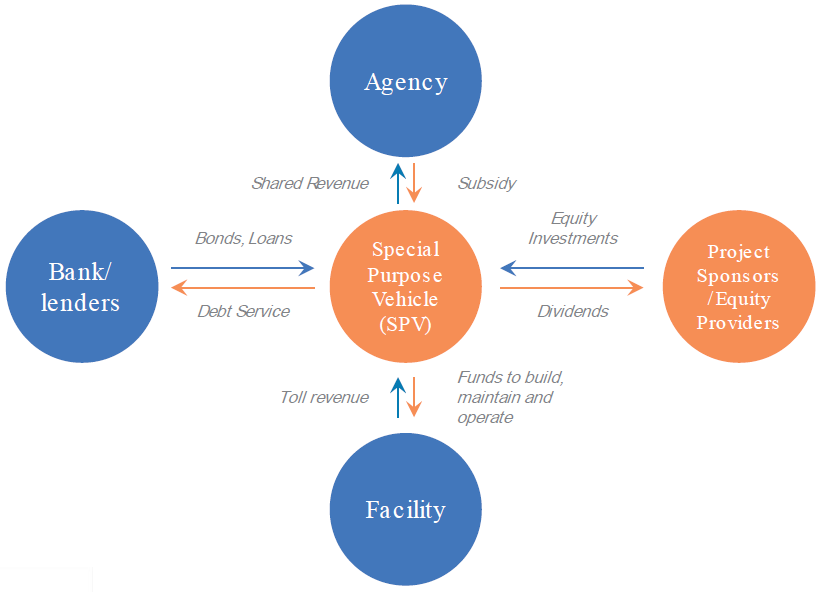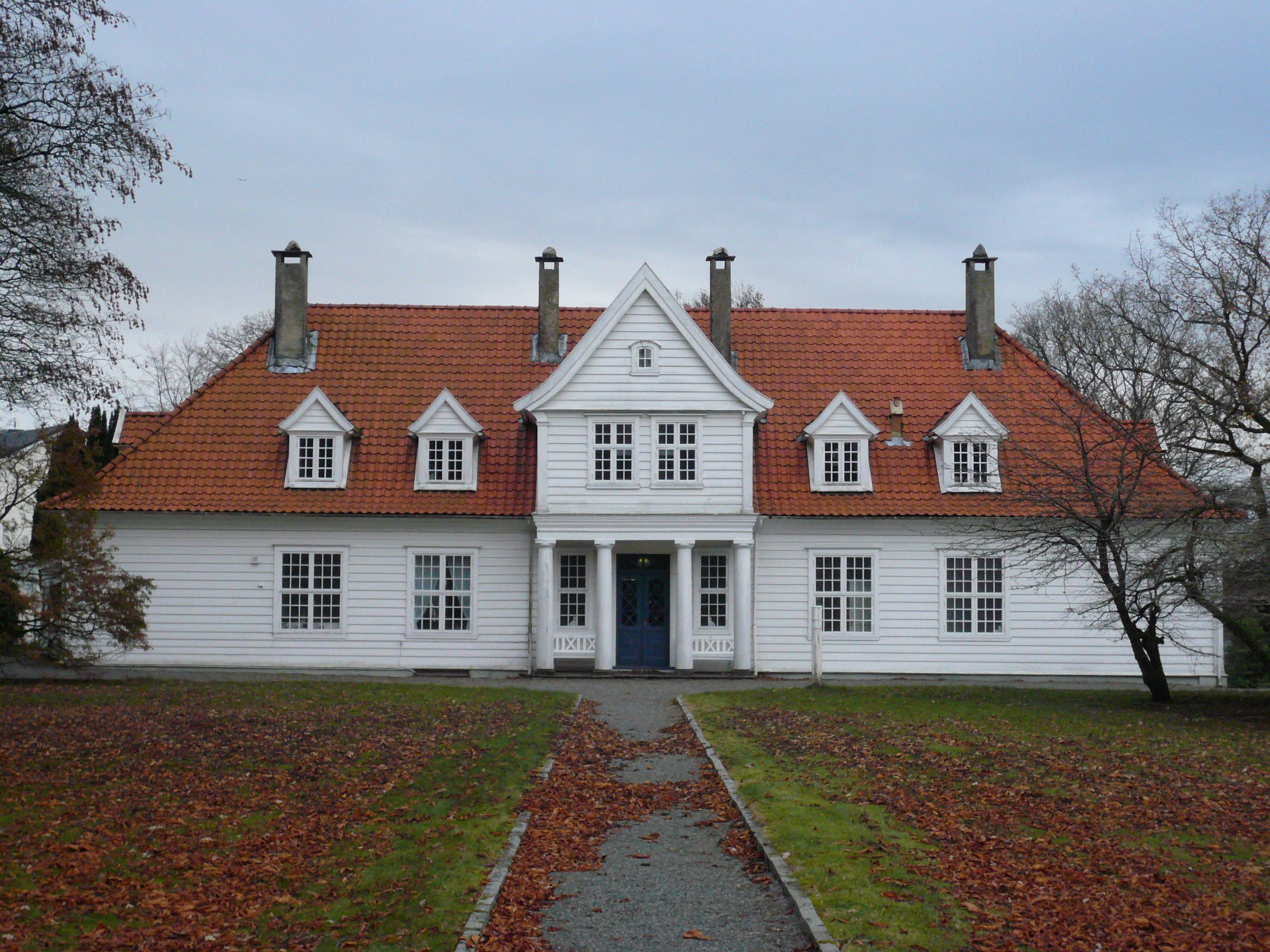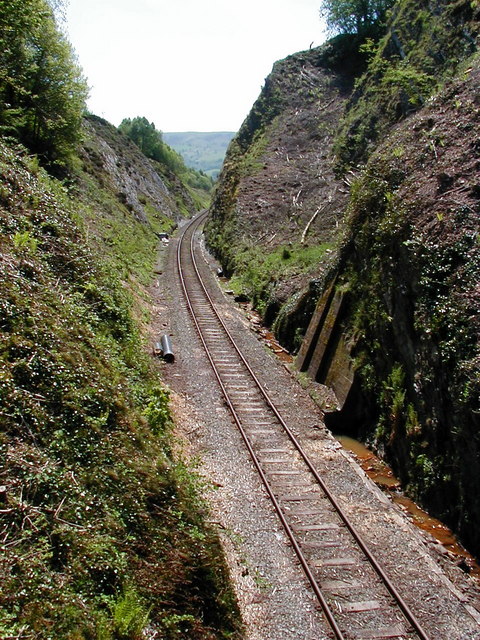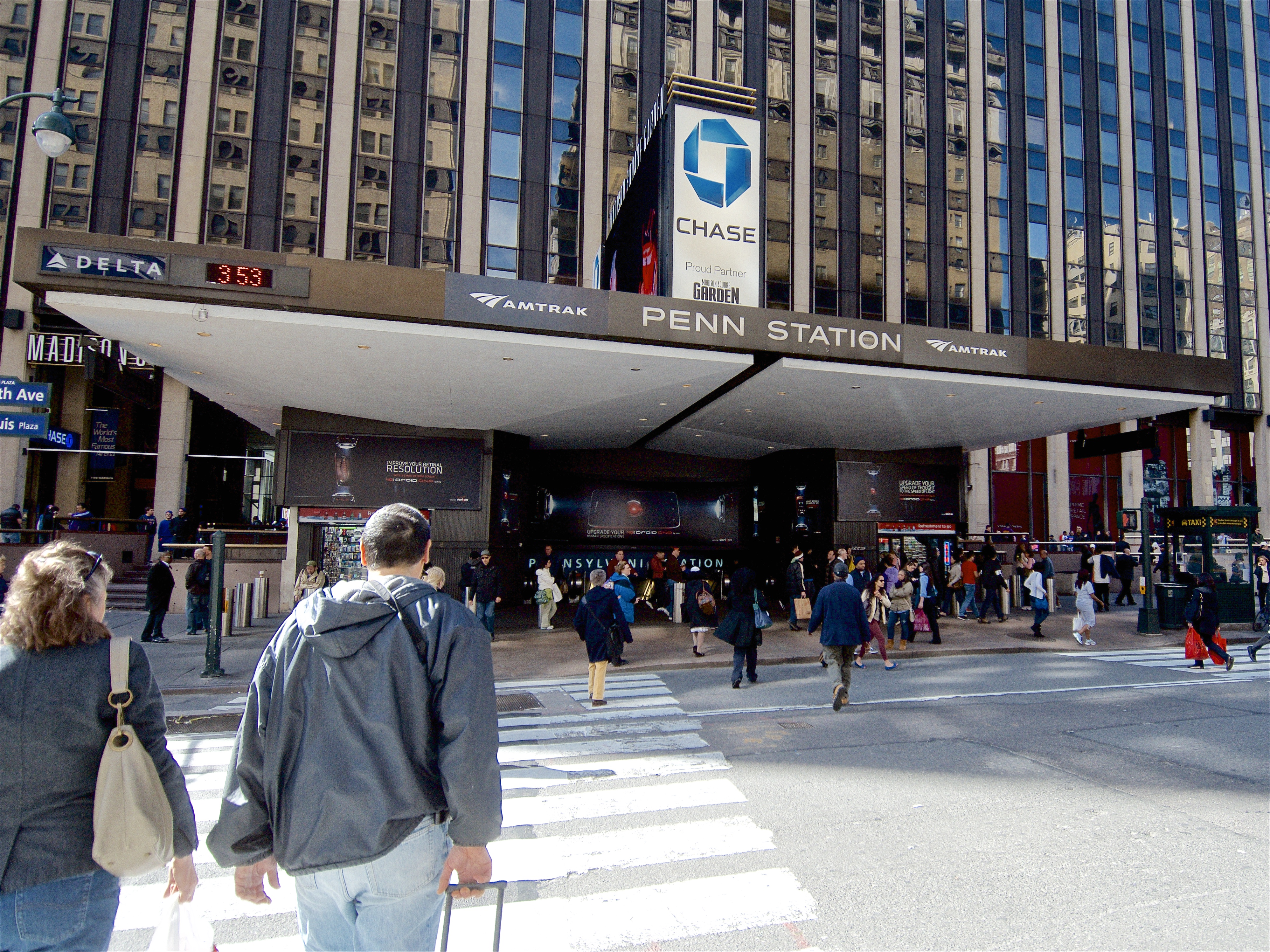|
Nesttun–Os Line
The Nesttun–Os Line ( no, Nesttun–Osbanen) was a narrow gauge railway between Nesttun, now part of Bergen, and the community of Osøyro in Os, Hordaland, Os municipality, Norway. As the first private railway in Norway, it opened 1 June 1894, designed to connect Os to the Old Voss Line, Voss Line, allowing for passenger and freight transport to Bergen and Voss. Despite a boom caused by World War I, the railway was eventually driven out of business by competition from road transport, which provided faster service. On 2 September 1935, it became the first Norwegian railway to close, and most of the railway was dismantled the following year. Today, only short stretches of the railway and a few stations survive. Much of the former railway line is used as a bicycle path (rail trail), which makes revival of the Nesttun–Os Railway as a heritage railway very difficult. However, a 40 metre long railway stretch remains at Stend Station, the only unaltered remaining station, upon which ... [...More Info...] [...Related Items...] OR: [Wikipedia] [Google] [Baidu] |
Osøren Station
Osøren Station was a railway station located in Osøyro Osøyro is the administrative centre of Bjørnafjorden municipality in Vestland county, Norway. The village lies on the southwestern part of the Bergen Peninsula, along the western shore of the Fusafjorden, about south of the city centre of Be ... in Hordaland, Norway. The station was the terminus of Nesttun–Osbanen from its opening on 1 June 1884 to its closure on 2 September 1935. After the railway closed, the station environment has been kept as a heritage railway centre. Railway stations in Vestland Disused railway stations in Norway Os, Hordaland Railway stations in Norway opened in 1884 Railway stations in Norway closed in 1935 {{Norway-railstation-stub ... [...More Info...] [...Related Items...] OR: [Wikipedia] [Google] [Baidu] |
Heritage Railway
A heritage railway or heritage railroad (US usage) is a railway operated as living history to re-create or preserve railway scenes of the past. Heritage railways are often old railway lines preserved in a state depicting a period (or periods) in the history of rail transport. Definition The British Office of Rail and Road defines heritage railways as follows:...'lines of local interest', museum railways or tourist railways that have retained or assumed the character and appearance and operating practices of railways of former times. Several lines that operate in isolation provide genuine transport facilities, providing community links. Most lines constitute tourist or educational attractions in their own right. Much of the rolling stock and other equipment used on these systems is original and is of historic value in its own right. Many systems aim to replicate both the look and operating practices of historic former railways companies. Infrastructure Heritage railway lines ... [...More Info...] [...Related Items...] OR: [Wikipedia] [Google] [Baidu] |
Concession (contract)
A concession or concession agreement is a grant of rights, land or property by a government, local authority, corporation, individual or other legal entity. Public services such as water supply may be operated as a concession. In the case of a public service concession, a private company enters into an agreement with the government to have the exclusive right to operate, maintain and carry out investment in a public utility (such as a water privatisation) for a given number of years. Other forms of contracts between public and private entities, namely lease contract and management contract (in the water sector often called by the French term ''affermage''), are closely related but differ from a concession in the rights of the operator and its remuneration. A lease gives a company the right to operate and maintain a public utility, but investment remains the responsibility of the public. Under a management contract the operator will collect the revenue only on behalf of the govern ... [...More Info...] [...Related Items...] OR: [Wikipedia] [Google] [Baidu] |
Wollert Konow (SB)
Wollert Konow (16 August 1845 – 15 March 1924) was the 12th prime minister of Norway from 1910 to 1912. He was the leader of a coalition cabinet. Konow's time as Prime Minister saw the extension of accident insurance to seamen in 1911. Background Konow was born in the borough of Fana in the city of Bergen, Norway. He was the son of Wollert Konow (1809–1881) and Marie Louise Oehlenschläger (1818–1910). His father was a writer and elected official. In 1842 his parents had purchased the historic Stend Manor in Fana where Wollert Konow was born. Wollert Konow was a grandson of the noted Danish poet and playwright Adam Oehlenschlager (1779–1850). He was a student at Bergen Cathedral School. After graduating in 1864, Konow went to the Royal Frederick University in Christiania. He began to study law which he never completed. In 1868, he started a school at Halsnøy in Sunnhordland where he was both teacher and head manager until 1872. In 1873 Konow took ove ... [...More Info...] [...Related Items...] OR: [Wikipedia] [Google] [Baidu] |
Fredrik Georg Gade
Fredrik Georg Gade (21 March 1855 – 1 March 1933) was a Norwegian physician. Personal life He was born in Bergen as the son of merchant Fredrik Georg Gade (1830–1905) and his wife Ingeborg Wallem (1830–1902). The family originated in Lüneburg; an ancestor had migrated to Norway in the eighteenth century. The name Fredrik Georg was a family tradition. He was the brother of Herman Gerhard Gade, and a first cousin of Fredrik Barbe Wallem, Fredrik Herman Gade and John Allyne Gade. Gade married twice. His first marriage, to Augusta Smith-Petersen (1858–1936), a daughter of Morten Smith-Petersen, lasted from September 1881 to 1898—she later married Christian Sinding. Secondly, Gade married Louise Kiær (1866–1959) in June 1908. She was a Danish citizen. The couple settled at Heggeli in Vestre Aker. Gade was a skilled amateur violinist, and played together with composer and conductor Iver Holter while studying. He also befriended cultural and political personalitie ... [...More Info...] [...Related Items...] OR: [Wikipedia] [Google] [Baidu] |
Nicolay Nicolaysen Sontum
Nicolay Nicolaysen Sontum (1852–1915) was a Norwegian engineer, businessperson and contractor. Sontum was born in Bergen in 1852 and took an engineering degree from Chalmers University of Technology in Gothenburg, Sweden, in 1874. From 1875 to 1876, he worked as an assistant engineer for the Norwegian State Railways during the construction of the Røros Line, from 1876 to 1878 he worked as an assistant engineer during the construction of the Meråker Line. In 1880, he established himself as an independent engineering consultant, and established Det private Ingeniør- og Opmaalingskontor in Bergen. He worked on several of the docks in Bergen and other road and dock projects throughout Western Norway. By the 1890s, his company had developed into a contractor and he was the main contractor for two private narrow gauge railways, the Nesttun–Os Railway and the Lillesand–Flaksvand Line The Lillesand–Flaksvand Line ( no, Lillesand–Flaksvandbanen) or LFB was a railway between ... [...More Info...] [...Related Items...] OR: [Wikipedia] [Google] [Baidu] |
Cut (earthmoving)
In civil engineering, a cut or cutting is where soil or rock from a relative rise along a route is removed. The term is also used in river management to speed a waterway's flow by short-cutting a meander. Cuts are typically used in road, rail, and canal construction to reduce the length and grade of a route. Cut and fill construction uses the spoils from cuts to fill in defiles to cost-effectively create relatively straight routes at steady grades. Cuts are used as alternatives to indirect routes, embankments, or viaducts. They also have the advantage of comparatively lower noise pollution than elevated or at-grade solutions. History The term ''cutting'' appears in the 19th century literature to designate rock cuts developed to moderate grades of railway lines. ''Railway Age's Comprehensive Railroad Dictionary'' defines a cut as "a passage cut for the roadway through an obstacle of rock or dirt." Creation Cuts can be created by multiple passes of a shovel, grader, scrap ... [...More Info...] [...Related Items...] OR: [Wikipedia] [Google] [Baidu] |
Transport Hub
A transport hub is a place where passengers and cargo are exchanged between vehicles and/or between transport modes. Public transport hubs include railway stations, rapid transit stations, bus stops, tram stops, airports and ferry slips. Freight hubs include classification yards, airports, seaports and truck terminals, or combinations of these. For private transport by car, the parking lot functions as a unimodal hub. History Historically, an interchange service in the scheduled passenger air transport industry involved a "through plane" flight operated by two or more airlines where a single aircraft was used with the individual airlines operating it with their own flight crews on their respective portions of a direct, no-change-of-plane multi-stop flight. In the U.S., a number of air carriers including Alaska Airlines, American Airlines, Braniff International Airways, Continental Airlines, Delta Air Lines, Eastern Airlines, Frontier Airlines (1950-1986), Hughes Airwest, ... [...More Info...] [...Related Items...] OR: [Wikipedia] [Google] [Baidu] |
Dale, Hordaland
Dale () or Dalekvam is the administrative centre of Vaksdal municipality, in Vestland county, Norway. The village lies at the western end of the Bergsdalen valley, about northeast of the village of Stanghelle on the shore of the Veafjorden. The village lies along the European route E16, the Bergen Line (and Dale Station), and the river Daleelva. The village has a population (2019) of 1,193 and a population density of . The small village of Dalegarden at the southern end of Dale is included in the "urban area" of Dale. Dale Church is located in the village. The village is also the site of the international Dale of Norway company which manufactures wool sweaters and outdoor jackets. There is also a textile mill and other small industries. The newspaper ''VaksdalPosten ''VaksdalPosten'' (The Vaksdal Gazette) is a local Norwegian newspaper published once a week in Dale in Hordaland county. The paper covers events in the municipalities of Vaksdal and Modalen. The newspaper ... [...More Info...] [...Related Items...] OR: [Wikipedia] [Google] [Baidu] |
Granvin
Granvin is a former municipality in the old Hordaland county, Norway. The municipality existed from 1838 until its dissolution in 2020 when it merged with Voss Municipality. The municipality was located in the traditional district of Hardanger. The administrative centre of Granvin was the village of Eide, which is also called "Granvin". About half of the residents of the municipality lived in the municipal centre. The rest lived in the rural valley areas surrounding the Granvin Fjord or the lake Granvinsvatnet in the central part of the municipality. Prior to its dissolution in 2020, the municipality is the 326th largest by area out of the 422 municipalities in Norway. Granvin is the 403rd most populous municipality in Norway with a population of 933. The municipality's population density is and its population has decreased by 4.5% over the last decade. General information The parish of ''Graven'' (later spelled "Granvin") was established as a municipality on 1 January 1838 ... [...More Info...] [...Related Items...] OR: [Wikipedia] [Google] [Baidu] |
Norheimsund
Norheimsund is the administrative centre of the municipality of Kvam in Vestland county, Norway. The village is located on the northern side of the Hardangerfjord, about from the city of Bergen. The village of Øystese lies about to the northeast and the village of Vikøy lies about southeast of Norheimsund. The village of Steine is a suburb, immediately to the west of Norheimsund. The village (which includes the neighboring village of Øystese) has a population (2019) of 4,399 and a population density of . Norheimsund has a lot of tourist traffic, especially in the summers. The waterfall Steinsdalsfossen, as of 2006 the 6th most visited natural tourist attraction in Norway, is located in Steine, just west of Norheimsund before the entrance to the Toka Gorge. Norheimsund is the seat of municipal government and largest commercial center in the municipality with about 50 stores. There is also some industry in the village with factories, wood processing plants, and food proces ... [...More Info...] [...Related Items...] OR: [Wikipedia] [Google] [Baidu] |
Samnanger
Samnanger () is a municipality in the Midhordland region of Vestland county, Norway. The administrative centre of the municipality is the village of Tysse. Other main villages in the municipality include Haga and Bjørkheim in Nordbygda. The municipality is located about east of the city of Bergen, Norway's second largest city. It surrounds the inner part of the Samnangerfjorden and the surrounding valleys. There are mountains that surround the municipality. The development of hydroelectric power plants started here in 1909. The municipality is the 274th largest by area out of the 356 municipalities in Norway. Samnanger is the 251st most populous municipality in Norway with a population of 2,501. The municipality's population density is and its population has increased by 3.5% over the previous 10-year period. In 2016, the chief of police for Vestlandet formally suggested a reconfiguration of police districts and stations. He proposed that the police station in Samnanger b ... [...More Info...] [...Related Items...] OR: [Wikipedia] [Google] [Baidu] |






